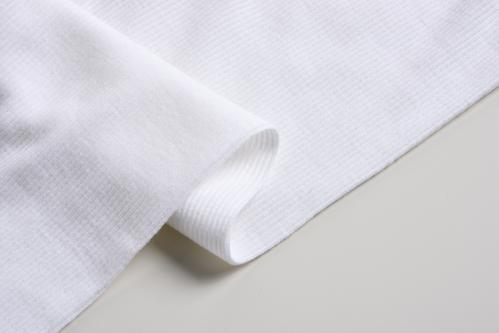Understand dyestuff knowledge, delivery problem
How to solve the poor whiteness and wool effect of knitted and dyed products?
Regarding pre-treatment: Poor whiteness includes imperfect whiteness, unevenness, and hair effect less than 8-10cm / 30min, which is related to the quality of knitted fabrics. For example, if the content of low-grade cotton is high, whiteness and hair effect are not easy To do a good job, of course, the most important thing is the process formulation and the selection of additives. In process development:
① The amount of H202 and NaOH must be sufficient
H202: After pretreatment, it not only plays the role of bleaching pigment, but also has the function of removing impurities (including cottonseed shell). The amount of H202 is insufficient (including too fast decomposition), and whiteness cannot be guaranteed. NaOH not only provides the Alkalinity (PH), combined with scouring agent, has the largest effect of removing impurities. If the amount of NaOH is insufficient, the removal of impurities is poor. The gross effect cannot meet the requirements first, of course, the whiteness cannot meet the requirements, so the amount of H202 and NaOH It can be said that it is the first factor to ensure whiteness and gross effect;
② Select high-quality scouring agent:
The cleaning, emulsifying, dispersing, and penetrating effects of scouring agents must be excellent to ensure the removal of impurities and whiteness and hair efficiency. However, the quality of scouring agents in the market varies, and we must choose products with excellent comprehensive effects. Not only measuring permeability and solid content, permeability is only one aspect to consider;
③ oxygen bleaching stabilizer and chelating dispersant:
These two additives are mainly used to improve water quality, adsorb and complex Fe3 + and other metal ions in water, and prevent metal ions from catalyzing the rapid and ineffective decomposition of H202. If H202 decomposes quickly and ineffectively, its whiteness and gross effect will not be achieved. Requirements, at the same time, it will cause brittleness and even holes in the fabric. Therefore, to achieve whiteness and wool effect, the oxygen bleaching stabilizer must be selected from excellent varieties. In the selection, the decomposition rate of H202 must be considered. The addition of chelating dispersant not only chelate iron, but also can chelate and disperse various impurities in water, so that these impurities no longer re-stain the fabric and cause whiteness and dark graying. Therefore, chelated dispersant not only Consider its chelating power to metal ions and its dispersing power;
④ Process conditions:
It takes a certain time and temperature for the additive to react with impurities. If the conditions are not met, the pigments and impurities are not removed cleanly, and the whiteness and hair effect cannot be achieved:
⑤ Washing:
Washing after bleaching is very important. The impurities removed must be cleaned to ensure whiteness and hair efficiency.

- Recommended Products:
- Sulphur Blue 7
- Sulphur Red 14
- Vat Yellow 2
- Vat Orange 11
- Vat Blue 4
- Vat Green 8
- Vat Green 3
- Vat Green 1
Products Catalog
- solvent red 24
- solvent red 49
- solvent red 122
- solvent red 111
- solvent red 146
- solvent red 195
- solvent yellow 21
- solvent yellow 33
- solvent yellow 93
- solvent yellow 98
- solvent yellow 114
- solvent orange 60
- vat red 41
- solvent green 3
- solvent green 5
- solvent blue 70
- solvent blue 104
- solvent black 3
- solvent violet 31
- solvent violet 13
Copyright right HANGHZOU EMPEROR CHEMICAL CO,,LTD © 2019 All rights reserved.

 Pусский
Pусский